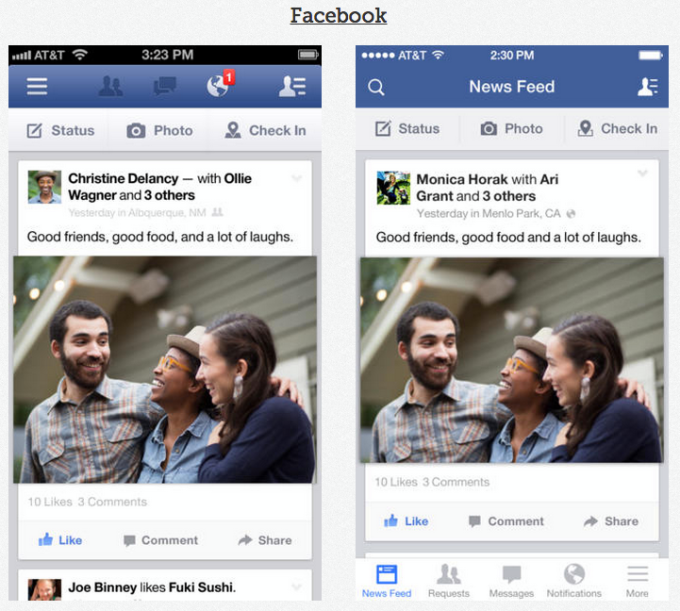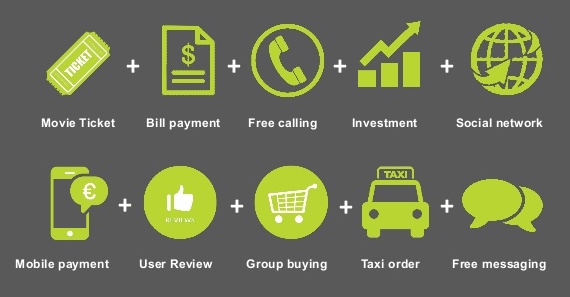We are always hoping to get longevity from our digital investments - and this is certainly true when it comes to mobile. Having invested tens of thousands of dollars in a new app, or geolocation, or responsive design - we don't want to turn around to find that these features have quickly become outdated, and you are left with a lost investment.
To help you make an informed decision about where you can spend your mobile budget, we have collected the top 5 mobile trends we think will be valuable to watch for in 2017.
1. Advertising will shift to mobile apps
In 2017 we expect to see a LOT more mobile apps on offer, from all corners of the business world, especially from small businesses.
And in line with the projected growth in downloads (268 million!), we’re likely to see the amount of advertising on apps soar. What we see today is that most advertising on apps is by companies and products which are directly related to the app.
Image source: eBay
For example, if you download a game, you’re going to see a lot of ads for other games.
But with advances in programmatic advertising and more robust ad buying networks, in 2017 there’s going to be significant differentiation of in-app advertising — which will lead to more marketing opportunities for enterprising companies.
After all, who’s to say the same people shopping for a new CMS don’t also love playing Clash of Clans?
2. Hidden navigation will be phased out
 Image source: TechCrunch
Image source: TechCrunch
This particularly optimistic design prediction comes from James Archer, the VP of sales and marketing at Crowd Favorite.
He argues (rightfully so) that the hamburger menu and other hidden navigation tools hurt UX and navigation and reckons that 2017 is the year that this specific design trope finally moves on.
While we don’t quite share his outright optimism that the hamburger menu will cave (after all, it’s been around this long) we do think we will see a shift away from hidden navigations in the most prominent mobile sites and responsive solutions.
3. App consolidation

For the past year, we’ve seen apps splinter into single function apps, focusing on doing one thing, really well. And the benefits are clear:
You can provide excellent micro-interactions
- Marketing and niche targeting in a competitive apps world is easier
- You’re really good at just one thing
- Providing a competitive, robust app experience is easier (and easier on the wallet)
However, as we’ve mentioned, we’ve seen apps going the other way in places like China.
So what does 2017 hold?
We think that there’s going to be a move away from single-function apps and towards cross-app integration. For example, people using Uber might want to also check their flight details. Or people using Airbnb might also want to book an Uber.
It comes down to Zawinski’s Law, which states:
Every program attempts to expand until it can read mail. Those programs which cannot so expand are replaced by ones which can.
Whether this consolidation happens at a design level within apps as an expansion of service offerings, or as at a top down company consolidation (e.g. merger) remains to be seen.
But we think that there’s going to be less enthusiasm for apps that do just one thing.
Messaging apps will become much more robust
 Image source: Apple
Image source: Apple
Like we just said, apps are going to consolidate – fewer apps, but each app does more. And nowhere is this going to be more prevalent than in messaging apps.
Again looking at the WeChat model- we think that messaging apps are best poised to bring multiple services together. They provide the most robust platform for a range of integrations, including reservations, banking apps (allowing both payments and money management), travel apps, and more.
We’ve seen this trend on iOS devices with the iMessage App Store, but its potential has not yet been fully reached yet. Expect to see much more in-message functionality becoming a staple of mobile in the coming year.
Next level responsive design

Finally, we think that responsive design is going to reach a new level of customization and personalization.
Specifically, we believe age-responsive design will become the new norm for the major industries. The idea of age-responsive design is pretty simple — websites appear differently depending on the age of the user. As an easy example, a website might display a larger font for user it knows are older (e.g. 65+) or it might opt for a bright and fun colour scheme for identified younger users.
With a proliferation of big data, our ability to use that for something useful, and the enormous amount of metadata we now implement and gather, we’re increasingly able to tell who is on a device at a given time.
Age-responsive design is essentially the design equivalent to hyper-accurate programmatic advertising. If you can offer age-appropriate products, it stands to reason you can provide an age-appropriate experience.
Conclusion
All in all, we’re excited for 2017. Better apps, more advertising opportunities, and the beginnings of developing multiple tools that will automatically deploy for the right users, it’s shaping up to be a great year for digital.
